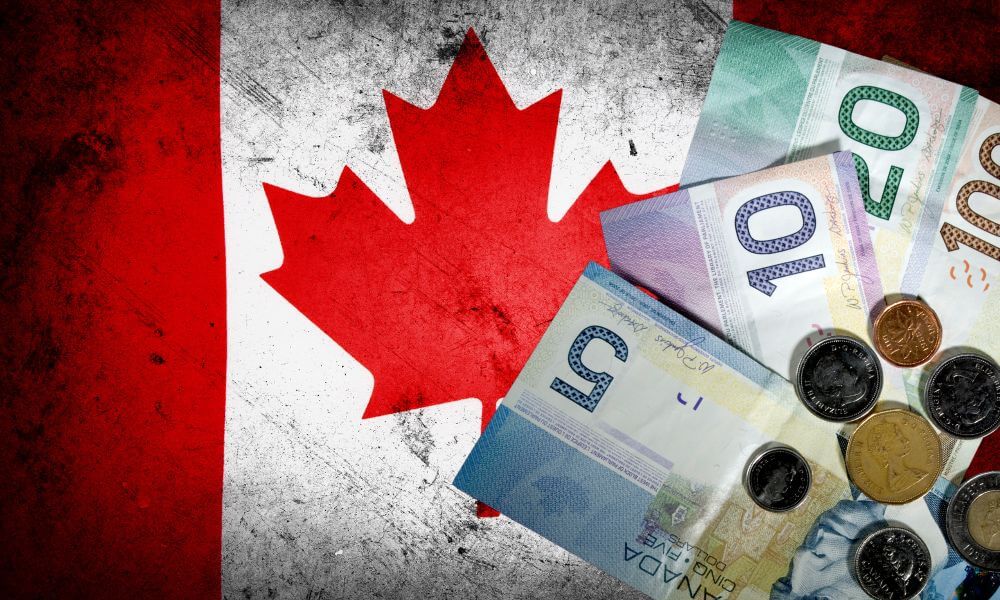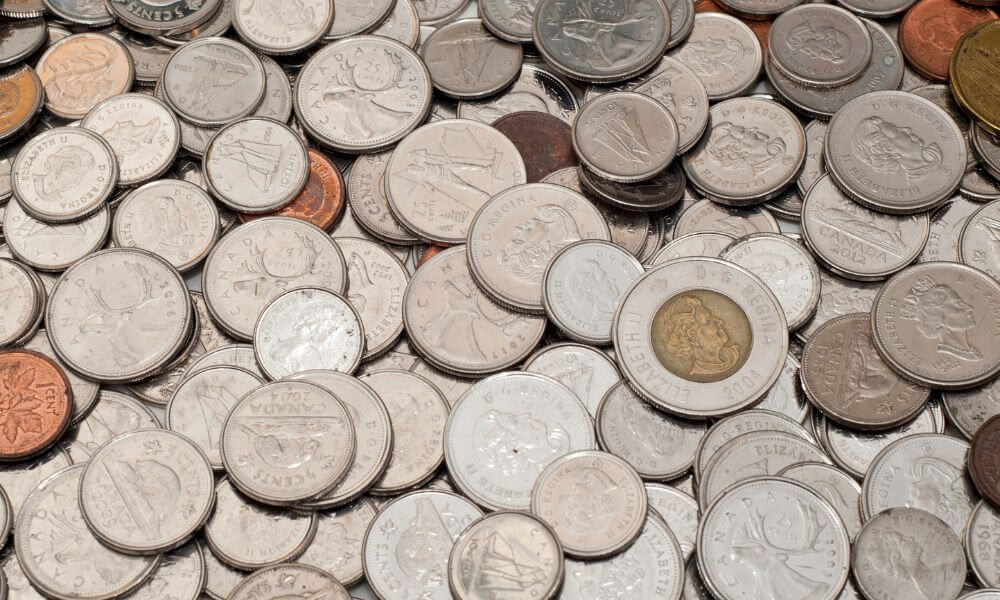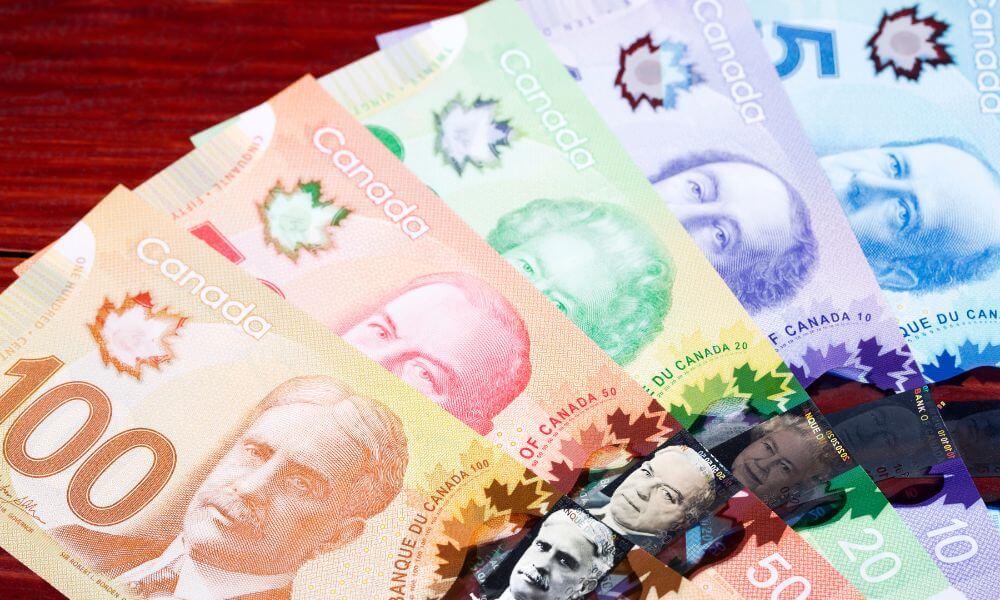Canadians most often refer to money as “bucks”, just as is the convention in the United States. However, Canadians also have a variety of terms for different denominations, such as loonie and toonie, nickle and dime as in the US, and things like fin, ten-spot, and dixie.
So, while there are a variety of terms for different denominations, the only real catch-all slang term for money is bucks, just like in the U.S.
Canadians have their dollars just like Americans do, and so the naming conventions are unsurprisingly very similar.
Let’s find out more.

What do Canadians call money?
Overwhelmingly, Canadians refer to money using the common North American slang term “bucks”.
This is by far the most common slang term to refer to money, and in fact most Canadians could probably get by most of their lives without ever using a different slang term for money.
Everyone uses it and understands it in Canada, and by just adding the number at the start you can change it to any denomination.
Interestingly, the French Canadian equivalent of this is piasses.
That said, there are a variety of slang terms which denote different coin and note denominations.
The most specifically Canadian are the terms loonie and toonie.
These refer to one and two-dollar coins respectively.
We’ll get into where these terms come from later, but after buck, these are the two most common slang terms you are likely to hear.
Most in Canada will understand them, even if they don’t use the terms themselves.
They also borrow a lot of slang from the U.S., such as nickle and dime.
However, notice that it is spelled “nickle” instead of “nickel” in Canadian slang.
A nickle is 5 cents, and a dime is ten cents, just as in America.
Other than that, you have fin for a five dollar note, though they are sometimes referred to using the British slang fiver.
Ten dollar notes are sometimes called a ten-spot, among other things.
There are also slang terms for twenty and one hundred dollar notes, like queen sheet for a 20 or c-note for a hundred.
However, these are not very common, and are more often heard in the U.S. than in Canada.
One important difference between Canada and the U.S. in this regard is the way they refer to notes sometimes using the name of the person who is displayed on the note.
A one-hundred in the U.S. is sometimes a “Benjamin”, but in Canada is a “Borden”.
Again, though, neither of these terms are really very common at all.
Why do Canadians say buck?
So, where does the term “buck” come from to mean dollar, and how did it come to be the main Canadian slang term for money?
Well, the simple answer is we don’t know for sure.
There are several theories.
The most common and widely accepted is that it dates back to the time of the European settlers in North America.
During the early period, buckskins would be used for trading, and so for example you might set the rate of a certain commodity to X amount of bucks.
In a journal from 1748, a Dutch pioneer records the price of a barrel of whisky as being “5 bucks”.
Settlers across what is now Canada and the U.S. would trade with one another and share language, so this is the most likely origin of the term.
At first, one buckskin didn’t necessarily equate to exactly one dollar, but by the time dollars were minted at the end of the 1700s, it had stuck as the most common slang term in both Canada and the U.S.
What do Canadians call coins?

There are a variety of Canadian slang terms for different coins.
The most common are those used also in the U.S., such as nickle and dime.
This is just a reference to the metals they were made out of.
Slang terms more commonly associated with Canada and not the U.S. are the loonie and toonie.
These refer to one and two dollar coins. One dollar coins bear the image of a loon, a native water bird.
Toonie is simply a combination of loon and two.
While these are used in Canada, they are just not as common as referring to something as a buck.
Even a one or two buck coin would probably be the preferred way for most Canadians.
What do Canadians call banknotes?

Finally, Canadians also have a few lesser used slang terms for bank notes.
Five dollar notes are sometimes called a fin, or like the British slang a fiver.
Ten dollar notes are sometimes called a ten-spot, or even a dixie, though this is much rarer.
Similarly with twenty dollar notes, which can be called a Queen Sheet due to the image of Queen Elizabeth which they display.
Finally, one hundred dollar notes are sometimes called c-notes.
However, in all of these, it is simply far more common to simply say “a five,” or “a ten,” or to just say “ten bucks” or “five bucks”.
There are slang terms for notes, but they’re rather uncommon.
You do have plenty of different ways for referring to money in Canadian slang, then.
It’s just that most of the terms beside “buck” tend to be very specific and refer to a specific denomination of money.
If you just want a simple, catch-all slang term for referring to any amount of money in Canada, then “buck” is your best bet.
More in Canadian Slang
- Canadian Slang For Beer (9 Examples!)
- Canadian Slang For Cigarettes (Explained!)
- Canadian Slang For Drunk (28 Examples!)
- Canadian Slang For Friend (Helpful Content)
- Canadian Slang For Hello (Explained!)
- Canadian Slang For Hot Girl (Helpful Content)
- Canadian Slang For Money (Explained!)
- Canadian Slang For No (Helpful Content)
- Canadian Slang For Snowmobile (Helpful Content)
- Canadian Slang For Yes (Explained!)

